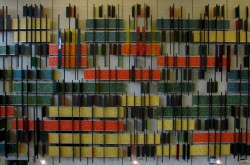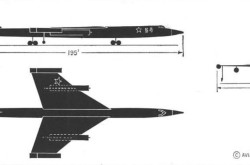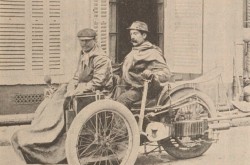The Avro Lancaster: Beyond the Second World War
The Avro Lancaster was a large British bomber airplane, manufactured by A.V. Roe and Company (Avro), that entered the Second World War in April 1942 and was best known for nighttime bombings of German cities. It was one of the first British bombers to feature four engines, which allowed it to carry a very large bombing load, more than 6,000 kg, as well as enough fuel to fly more than 2,600 km in a single flight. The Lancaster could reach speeds of 438 km per hour and had a high-altitude ceiling, at 7,530 metres.
Although the Lancaster is deeply associated with Britain’s war efforts, some were also produced in Canada by Victory Aircraft Limited of Malton, Ontario. Victory Aircraft built 422 Lancaster Mark 10s between 1943 and 1945, with the first Canadian-built Lancaster taking flight on August 1, 1943. Most Canadian-made Lancasters did not play a large role in the war effort. They were, however, used for a variety of post-war activities. The Royal Canadian Air Force repurposed approximately 230 Lancasters for a variety of tasks, including maritime patrol, search and rescue, and photographic surveying in the North. In fact, many of the same technical qualities that made the Lancaster an effective bomber made it suitable for northern flying and photographic surveying.
To illustrate this, let’s review what was involved in modifying a Lancaster for aerial photography and mapping missions. During the Second World War, the Lancaster’s four engines and large capacity allowed it to carry a crew of seven, a payload, and enough fuel for long flights. In photographic surveying missions, these same design features allowed the Lancaster to carry the heavy equipment used in trimetrogon photography mapping, as well as a crew to operate the equipment. Trimetrogon photography featured three cameras pointing in different directions, allowing for larger swaths of land to be photographed at once. Additionally, the Lancaster had the space and power to carry two 1, 500 L jet fuel tanks which were added to the bomb bay, allowing it to fly longer distances and survey more ground. Finally, the Lancaster’s high flight ceiling, which set it apart from its opponents during the Second World War, also allowed it to photograph more land in a single pass than other aircraft.
The Lancaster was an impressive piece of aviation technology and an effective tool for northern missions. There were, however, wider implications to its use. In particular, the photographing and mapping of the North using Lancasters did not happen in a sociopolitical vacuum. Cold War tensions after the Second World War sparked increased interest in Canadian Arctic sovereignty; for the Canadian government, photographing and mapping the vast, largely unknown region comprised an essential first step in achieving their sovereignty goals. The North, however, was far from unknown: Indigenous peoples have inhabited the region since time immemorial, with the Inuit living off the land in small mobile kinship groups. So, for instance, when a Lancaster expedition “discovered” three Arctic islands in 1948, it is important for museums and the public to challenge the extent to which these were new discoveries at all.

This Lancaster flew aerial photography missions with the RCAF’s 413 Squadron in the late 1940s.
The Lancasters’ aerial mapping of the North helped lay the foundation for the Canadian government’s presence in the Arctic, which began in the 1950s and would have devastating impacts on the Inuit in the following decades. The Qikiqtani Truth Commission Report documents the immense change in Inuit way of life from 1950 to 1975 and their coerced relocation into year-round settlements. To quote the Qikiqtani Report, “In effect, Inuit were used as human flag poles to achieve Canada’s nation-building agenda in the Arctic.”
The Avro Lancaster played a well-known role in the Allied victory over Nazi Germany, but technologies have multiple narratives, and especially at a time when Canada is working towards truth and reconciliation, it is important to recognize the complexity of the Lancaster’s legacy, including its part in Canada’s colonial past and present.
Enjoying the Ingenium Channel? Help us improve your experience with a short survey!








![A block of photographs showing some of the people involved in the bombing of beluga whales in the estuary and gulf of the St. Lawrence River. Anon., “La chasse aux marsouins [sic]. » Le Devoir, 15 August 1929, 6.](/sites/default/files/styles/thumbnail_7/public/2024-09/Le%20Devoir%2015%20aout%201929%20page%206.jpg?h=584f1d27&itok=TppdLItg)








